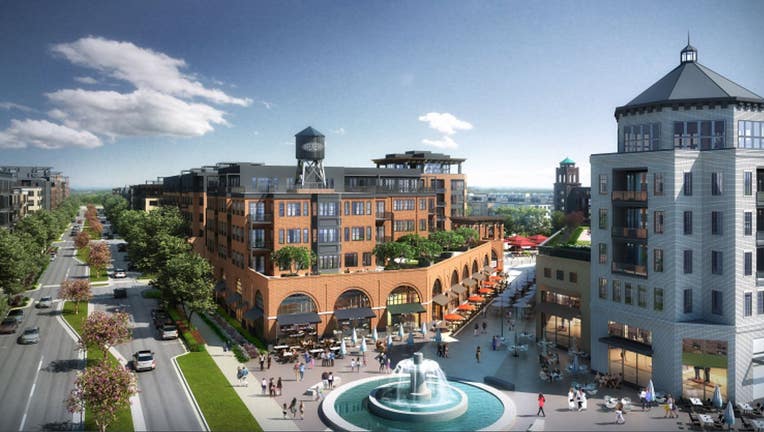St. Paul strikes Ford site deal, including $53 million from taxpayers

ST. PAUL, Minn. (FOX 9) - St. Paul city officials have struck a development deal for the long-vacant Ford Motor Co. assembly plant site, including a $53 million contribution from taxpayers.
The deal with Minneapolis-based Ryan Companies includes 3,800 solar-powered housing units -- 20 percent of which will be income-restricted. Offices, retail space, and public areas will fill in the 122-acre site.

St. Paul officials reach agreement for former Ford plant site
St. Paul officials reached an agreement for the former Ford plant site.
The project could ultimately be worth $1 billion and take 20 years to fully build out, Mayor Melvin Carter and developers said Tuesday morning.
"This redevelopment proposal is the once-in-a-generation opportunity we have envisioned," Carter said during a ceremony on the Ford site held in a tent that barely kept out the frigid cold.

Ryan Companies officials said they planned to start work on the site in the spring. First, St. Paul City Council will need to approve the development agreement, which Carter said he would submit to council members by the end of this year.
Public subsidies will reach at least $53 million for roads, parks and utility projects. But the final cost to taxpayers will likely be much higher, depending on how city council members approve individual pieces of the 40-block site.
City officials and developers say the project will create:
-13,000 construction jobs and 1,000 permanent jobs once built out
-760 affordable housing units, including some row houses
-265,000 square feet of office space
-150,000 square feet of retail space
-50 acres of public areas, including parks and the retention of two existing baseball fields
Mike Ryan, chief executive of Ryan Companies, said Tuesday's announcement will help as his company buys the land from Ford.
"I can’t comment on the timing of (the purchase)," Ryan told reporters after the ceremony, "but today’s event was an important one to have in advance of that."
Ford site's long history
Ford built the assembly plant in 1925 and began making the Model T there. It was considered an engineering marvel, with a hydroelectric dam on the Mississippi River producing electricity for the plant.
Later, during World War II, the plant produced armored trucks for the U.S. military.
At its peak, the facility employed 2,100 workers. In later years, workers produced Ford Ranger pickups, before the plant closed in 2011.
Residents in the Highland Park neighborhood have long raised concerns about redevelopment, traffic and parking.
"We’ll build parking spaces based on demand, and most Minnesotans like to have a car," Ryan said. He said the homes would have parking, with additional parking spaces for offices and retail businesses.
He said Ryan Companies planned to build one of the biggest solar arrays in Minnesota to provide electricity to homes and businesses in the project's footprint.
Development will start at the Mississippi River and along Ford Parkway and work toward the south and east, he said.
The first residents will move in within three years, and the public spaces will be built within five years, he said.
Several city council members attended Tuesday's announcement, and Carter said he expected the council to sign off on the development agreement.
"I’m confident that the city council, our business community, our residents, are going to see this as an enormous vision for the city and be excited to move it forward, yes," he said.

